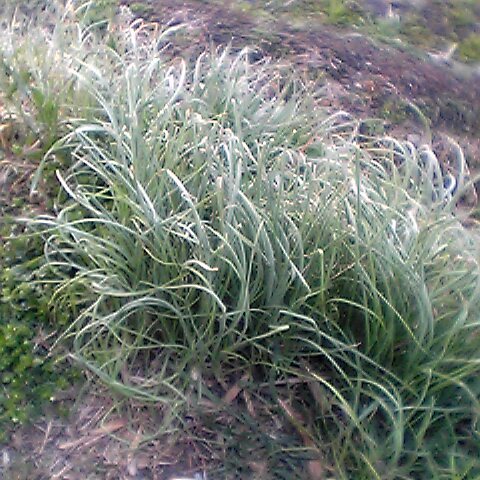Bulb solitary, subglobose, 0.7--1.5(--2) cm in diam., usually with bulbels at base; tunic blackish, papery or membranous, entire. Leaves shorter than scape, 2--5 mm wide, semiterete or 3-angled-semiterete, abaxially strongly 1-angled, fistulose, adaxially channeled. Scape 30--70 cm, terete, covered with leaf sheaths for 1/4--1/3 its length. Spathe 2-valved, persistent. Umbel hemispheric to globose, densely many flowered, bearing bulblets and flowers or bulblets only. Pedicels subequal, 3--5 × as long as perianth, bracteolate. Perianth pale purple to pale red; segments oblong-ovate to oblong-lanceolate, equal, 4--5.5 × 1.2--2 mm; inner ones usually shorter than outer. Filaments equal, 1/2 as long as to slightly shorter than perianth segments, connate and adnate to perianth segments, base triangular; inner ones ca. 1/2 as wide as outer at base. Ovary subglobose, with concave nectaries covered by hoodlike projections at base. Style exserted. Fl. and fr. May--Jul. 2 n = 16, 24, 32*, 40*, 48.
More
An onion family plant. A bulb plant. It grows to 60 cm high. There is only one bulb. It is 0.7-1.5 cm across. It can have small bulbils at the base. The covering is blackish and papery. The leave are shorter than the scape. They are 2-5 mm wide. They can be 3 angled. The scape is 30-70 cm long. The flower head is half round with many flowers and bulblets.
It is a temperate climate plant. It grows naturally on meadows and arable land in China, Japan. It grows from sea level to 1600 m altitude in N China and 3000 m in S China. It grows in Sichuan and Yunnan.
More
Meadows and arable land. Found throughout China on hills, slopes, valleys and plains; at elevations from near near sea level to 1,600 metres (3,000 metres in Yunnan).


